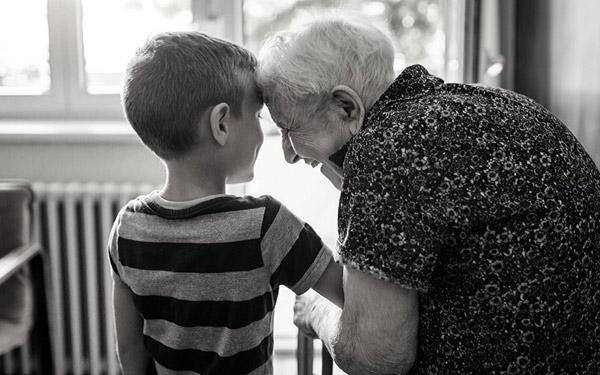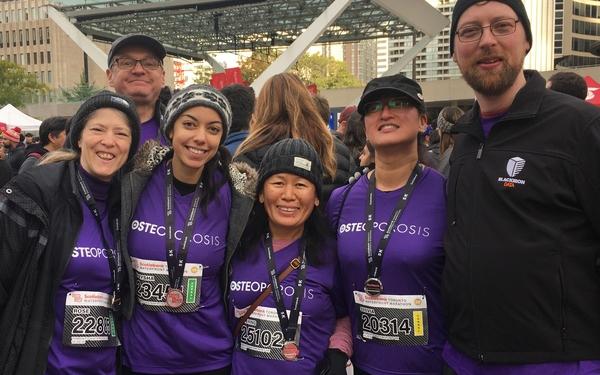
Bending With A Neutral Spine
When you bend over or lean forward to brush your teeth or wash your face at the bathroom sink or do other similar activities, it is very helpful to use a movement known as the hip hinge. The hip hinge is a more normal movement that creates a deep crease through the groin region and it significantly reduces the strain on the spine.
To do the hip hinge, bend your knees slightly, and while keeping your back straight from the hip to the shoulder with no bending or rounding at the waist and as lengthened as possible in the neutral spine position, stick out your tailbone behind you to bend forward from the hips. Your back muscles will need to be retrained to learn how to use the hip joint and the strong buttock muscles along with the leg muscles to allow you to bend and lean over with less strain on the spine. This movement will feel awkward at first but it will become more comfortable once you master the technique. Eventually, it will feel normal to bend this way without even thinking about it.
Hip Hinge
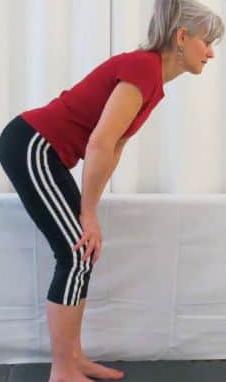

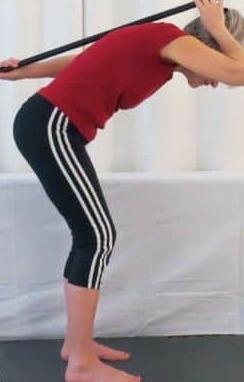
Helpful Hint:
When you bend over, think of using a little bend in the knee and a whole lot of butt muscle. These two movements work together to get the tail bone up to keep the spine from rounding. Look at yourself in a mirror to make sure you are doing this the right way.
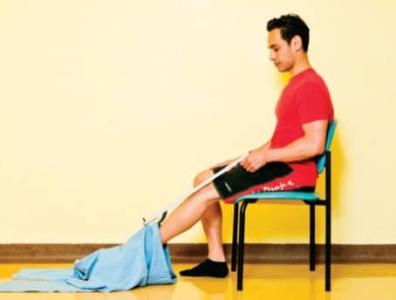
Using a long-handled reacher for dressing
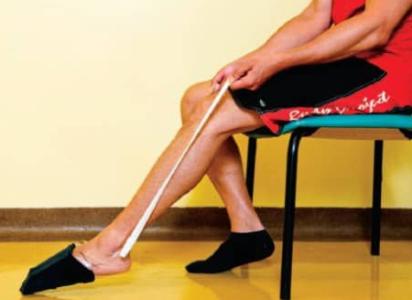
Using a sock aid
Helpful Hint:
In the first few weeks following your fracture, it may be helpful to use a long-handled reacher when you have to reach for lightweight items either very high or very low. Another assistive device that may be useful is a “sock aid”. These devices will help reduce rounding the spine, and are available in most pharmacies with home healthcare supplies.
Wearing a back brace
Wearing a back brace during the first few weeks following your fracture can be helpful to reduce the work the muscles have to do to keep the spine upright. The use of a back brace can also help to make sure that movement is controlled around the bone that is broken.
The type of elastic back brace that wraps around the abdominal region that helps to support our natural girdle muscles can help to relieve the work of the spinal support muscles. This can make it easier for you to keep a more neutral upright posture.
Once the bone has healed, normally in six to eight weeks, exercises to strengthen the muscles can be started and the brace will no longer be necessary. Once you have fully recovered from your broken bone, you may find it helpful to use your brace to help control your spine movements when you start to do some activities such as gardening and yard or housework that require more frequent bending. The brace can act as a reminder to use your hip hinge and keep the spine in neutral position.
Helpful Hint:
Try to put the elastic-type back support on backwards with the wide part in the front and the narrow part in the back; this helps to keep the spine really tall and straight.

